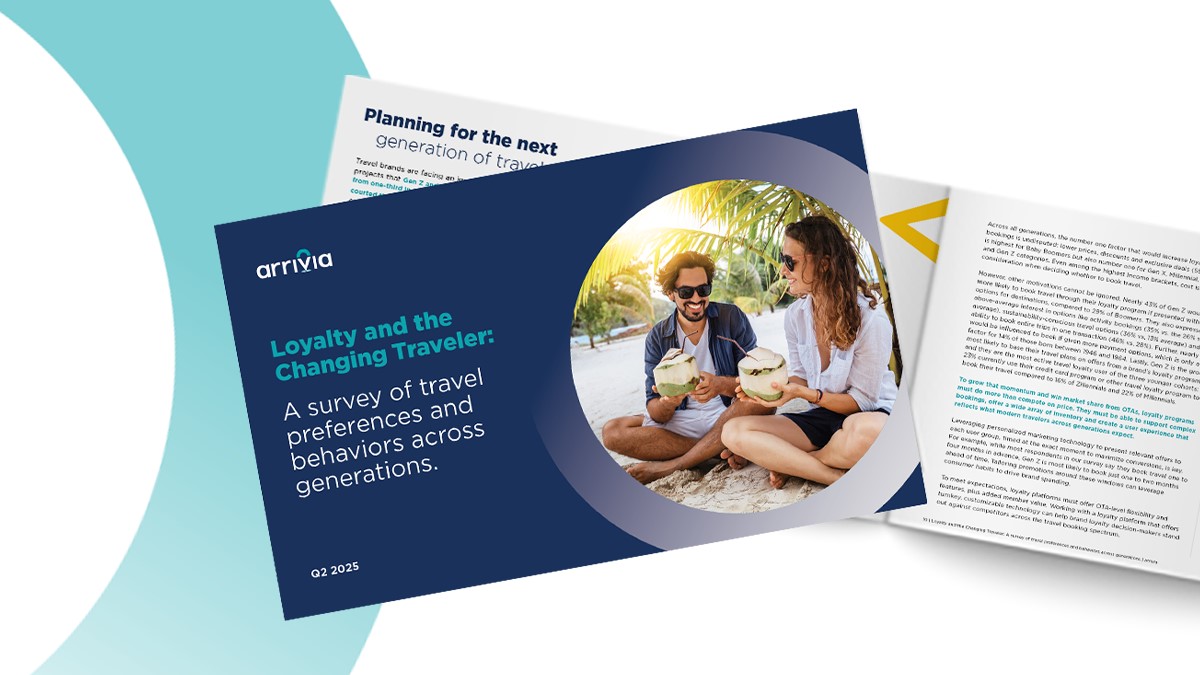Successful loyalty programs are defined by the mnemonic “Three R’s”—Rewards, Relevance, and Recognition. At the convergence of this time-tested trio are tiered loyalty programs designed to enhance data collection and personalize member interactions for consumer-preferred redemption options that escalate in value with continued loyalty program engagement.
In the fast-evolving landscape of shifting consumer engagement, tiered loyalty programs are driven by reliable human psychology and proven data insights, becoming essential tools for nurturing brand loyalty and enhancing customer experiences. Discover how to create a successful tiered loyalty program for your organization with trusted tips to reward top-tier customers.
What Are Tiered Loyalty Programs?
A tiered loyalty program is a rewards program in which members receive varying benefits according to their tier status. These programs categorize customers into different levels or ‘tiers’ based on specific purchasing behavior and engagement criteria. Most programs start with an entry-level tier, followed by progressively premium tiers like ‘Silver’ or ‘Gold.’
So, how does a tiered loyalty program work? Like traditional customer loyalty programs, a tiered loyalty program rewards customers for continued business spending and other activities, such as accumulating points or taking specific actions, like program referrals. Members unlock a new loyalty tier upon reaching a certain spending threshold or similar specified criteria.
As members progress through each membership tier, they earn greater benefits, such as gift cards, complimentary products and upgrades, exclusive discounts, savings credits, and experiential rewards through premium travel services. In other words, tier-based loyalty programs offer higher value benefits to higher-tier customers, maximizing the motivation—and the rewards— for ongoing loyalty.
Advantages of Tiered Loyalty Programs
What are the statistics of tiered loyalty programs, and do tiered loyalty systems bring in more business? The answers might surprise you. Tiered loyalty programs top the list of what consumers demand for their loyalty in 2023. In fact, “status tiers that provide new rewards at higher levels” overtook “co-branded credit cards” as the top priority for financial benefits and rewards.
Why are tiered rewards programs in such high demand?
Because they tap into consumers’ intrinsic motivation, the human nature for progression and achievement, and their extrinsic motivation, the desire to gain an external reward. Climbing to higher loyalty membership tiers and unlocking new rewards ultimately become consumers’ goals, incentivizing continued patronage and increasing long-term customer engagement.
Likewise, earning exclusive benefits makes customers feel more valued, fostering a deeper connection and strengthening brand loyalty. More than 60% of consumers agree that status tiers are an essential part of loyalty programs, and another 62% agree that tiers are a valuable way for brands to make loyal customers feel appreciated. Luckily, these findings benefit brands as well.
As members continuously interact with tiered loyalty programs, brands can gather critical insights on purchasing patterns, preferences, and behaviors, aiding in refined marketing strategies. Not to mention, enhanced data collection can power personalized rewards. By offering tailored rewards at each tier, businesses can cater to varied customer segments, ensuring ongoing relevance.
Crafting an Impactful Tiered Loyalty Program
Driving customer loyalty is more intricate than merely rewarding purchases. Sage businesses have begun leveraging tiered loyalty programs to offer value that escalates with continued engagement, creating a win-win for both brands and their patrons. Look at the five steps to create a successful tiered loyalty program that maximizes value for brands and loyal customers.
Step 1: Research and Segmentation
The first step in creating a tiered program is researching your target audience. Assess your audience’s online activity, purchasing behavior, and membership preferences using your current membership software, customer relationship management tool (CRM), or consumer surveys. These findings will help segment your target audience to inform your potential tier distinctions better.
Group your audience based on their purchasing habits, spending power, and engagement levels. From here, craft membership tiers that resonate with each segment’s needs. For instance, high spenders and frequent shoppers may belong to a premium loyalty tier with exclusive access to new launches or more significant discounts to account for their larger wallet share.
Step 2: Design a Transparent Structure
Now that you’ve designed a tiered membership structure, define how customers can progress between distinctions. Whether via accumulated points, spending thresholds, or specific actions, ensure clarity by publishing these guidelines somewhere easily discoverable on your site.
Likewise, be sure to explicitly list benefits associated with each tier, using charts or infographics on your website or social media pages for better visual clarity. Remember to maintain open channels of communication for customers to inquire about the program and their current status.
Step 3: Define Tier Boundaries
The next step in creating a tiered program is defining the tier boundaries. While the higher-level tiers should feel exclusive, they shouldn’t feel unattainable. Set challenging yet achievable thresholds, monitor membership progression rates, and adjust where necessary. Offer mini rewards, such as minor discounts, as customers approach tier upgrades to encourage continued progress.
Step 4: Curate Meaningful Rewards
With your tiers prepared, curate relevant rewards that align with your customers’ values. If your data suggests that members prioritize sustainability, consider rewards that echo this—such as eco-friendly products or donations to environmental causes—to make customers feel appreciated. Moreover, it aims to mix tangible and intangible benefits to maximize rewards relevancy.
Though physical goods are compelling, intangible rewards like unique experiences and insider content can be equally captivating. With relevance at the top mind, cater to the membership preferences unearthed in your audience research. Once your rewards are rolling, periodically solicit feedback on each tier’s redemption options to ensure they remain relevant and enticing.
Step 5: Assess Performance
Once your tiered loyalty program is underway, continuously assessing performance over time is vital. It’s crucial to track performance metrics like program engagement, average spending per tier, progression rates, and overall customer retention to gauge program health. Based on your insights, be ready to redefine tier thresholds, revise benefits, or even introduce temporary promotional tiers.
Above all else, it’s essential to adjust and innovate. Ensure your program remains fresh and aligned with market dynamics by regularly engaging your members through social media surveys, email questionnaires, or focus groups. Members’ first-hand experiences can offer invaluable insights into the strengths of your tiered loyalty program and areas for enhancement.
5 Examples of Tiered Loyalty Programs
Curious about what types of tiered loyalty programs are making a splash in the market? Take a look at these five highly-rated programs.
1. Sephora’s Beauty Insider Program
Ranked in the top ten health and beauty loyalty programs, as per Newsweek’s 2023 America’s Best Loyalty Programs Report, Sephora’s Beauty Insider Program received an overall satisfaction score of 8.08/10. Top-tier customers prefer the structure, which includes:
- Tiers: The program consists of Insider, VIB (Very Important Beauty Insider), and Rouge levels.
- Criteria: Progression is based on annual spending, with each tier offering additional benefits, such as more significant seasonal savings for VIB members and first access to products for Rouge members.
- Rewards: All members enjoy birthday gifts, exclusive promotions, and events, whereas higher tiers receive additional perks like early access to sales and free makeovers.
2. Starbucks Rewards
With a customer satisfaction score that lands it in the top ten of bakeries, coffee shops, and even casual dining options, Starbucks Rewards is one of the more linear types of tiered loyalty programs, where redemption options are presented in a tiered structure:
- Tiers: Redemption options are segmented into five tiers: 25, 100, 200, 300, and 400 ‘Stars.’
- Criteria: Customers earn ‘Stars’ for every dollar spent, which can be used to redeem beverages, food, or merchandise; for instance, the 25-Star tier can add flavored syrup to a beverage, and the 400-Star tier unlocks free branded merchandise.
- Rewards: Besides Star-based tier rewards, members also receive a birthday reward, free in-store refills, and exclusive member events and offers.
3. Marriott Bonvoy
Comfortably nestled in the top five of all hotel and hospitality rewards is Marriott Bonvoy, which was formed in the February 2019 merger of three former tiered loyalty programs, Marriott Rewards, Ritz-Carlton Rewards, and Starwood Preferred Guest:
- Tiers: The program consists of Member, Silver Elite, Gold Elite, Platinum Elite, Titanium Elite, and Ambassador Elite levels.
- Criteria: Tier progression is points-based, driven by nights spent at Marriott properties, credit card spending with the Marriott Bonvoy card, and spending with Marriott partners.
- Rewards: Benefits span from free Wi-Fi for Members to complimentary room upgrades, lounge access for Elite tiers’ customers, and even personalized ambassador service for the highest tier members.
4. American Airlines AAdvantage
Currently ranked number four in the best airline rewards programs in the world, the American Airlines AAdvantage tiered loyalty program was one of the first, initially introduced in 1981. Today, it maintains a competitive advantage through:
- Tiers: The program consists of Gold, Platinum, Platinum Pro, and Executive Platinum levels, as well as an invitation-only program called ConciergeKey for American Airlines’ most loyal customers.
- Criteria: Movement through tiers is based on the number of loyalty points earned, which can be accumulated through miles flown and other qualifying activities, such as spending with a co-branded AAdvantage credit card or partner travel brands.
- Rewards: From priority boarding and free checked bags to complimentary upgrades and mileage bonuses, each tier offers escalating benefits for travelers, including a dedicated phone line and day-of-travel assistance for ConciergeKey members.
5. Nordstrom’s The Nordy Club
As the second-most-popular loyalty program for retail and department store brands, Nordstrom’s The Nordy Club introduced the concept of ‘Notes,’ proprietary loyalty points for loyal Nordstrom customers. Members can attain Notes by achieving:
- Tiers: The program consists of Member, Insider, Influencer, Ambassador, and Icon levels.
- Criteria: Tiers are defined by annual spending at Nordstrom, beginning at $500 per year to progress from Member to Insider; however, Nordstrom credit card members begin at Insider status automatically.
- Rewards: Members receive early access to sales, curbside pickup, and free shipping, alteration credits, whereas higher tier levels receive invitations to exclusive Nordstrom events and free alterations. All Nordy Club members earn 1 point per $1 net spent on qualifying items, which converts to a $10 Note once 1,000 points are reached.

Common Pitfalls to Avoid With Tiered Loyalty Programs
Tiered loyalty programs can provide brands with a wealth of consumer information that, in turn, offers members highly relevant, personalized rewards to drive ongoing interactions. However, while tiers should add layers of engagement, they should be clear to customers. Avoiding too many tiers or overly complex criteria when crafting a tiered program is pivotal.
Likewise, remember that each tier in your rewards program—and every customer in each tier—is valuable. Ensure even entry-level tiers offer meaningful benefits, promoting a sense of inclusion for all members, regardless of spending power. Similarly, regularly update members about their tier status, upcoming rewards, or changes to the program to foster transparency and trust.
Lastly, pay attention to the fact that the market, your competitors, and even customer preferences change. If a program remains unaltered for years, it might lose its relevance. To avoid a static tiered loyalty program, periodically check in with your audience via satisfaction surveys and promotional polls. Garner these insights to fine-tune and modernize your program where necessary.
Transform Your Loyalty Program with Arrivia
As trends in consumer engagement and customer loyalty continue to shift, one thing remains certain: tiered loyalty programs offer increasing value to members and businesses alike. Enhance this value with arrivia’s cutting-edge solutions for tiered loyalty rewards, aligning world-class travel experiences with tailored membership marketing and communication.
Request a demo today to learn how to create a successful tiered loyalty program with arrivia!




